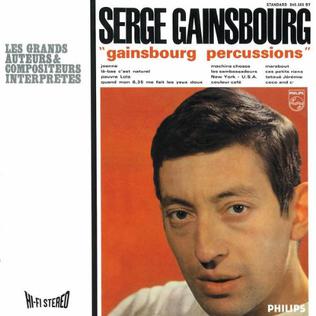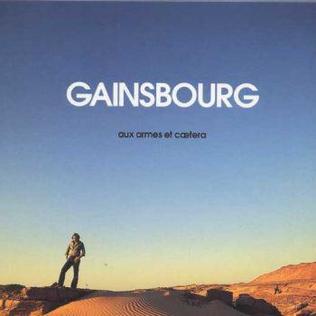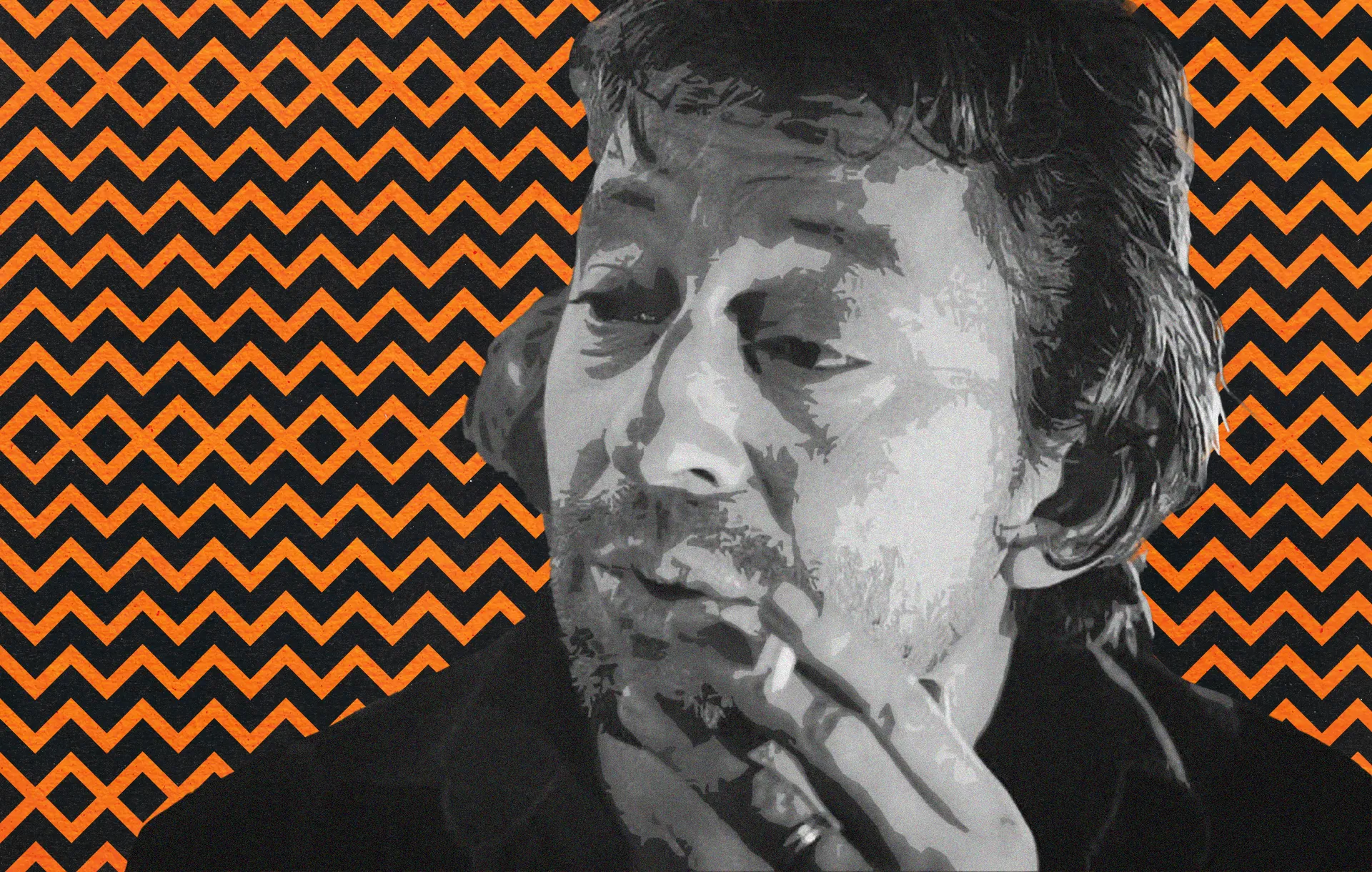From Ye-Ye to Rock and Elsewhere
With his trademark wordplay and double entendres, Gainsbourg quickly ascended to fame writing yé-yé hits for stars like Brigitte Bardot, Petula Clark and France Gall — most notably “Poupée de cire, poupée de son,” the 1965 Eurovision Song Contest’s Luxembourg winner. But it was with 18-year-old Gall that he reached infamy: she sang innocently of lollipops until realizing her hit single “Les sucettes” referenced more risqué topics… like oral sex. Gall later expressed displeasure at Gainsbourg’s antics, stating she felt “betrayed by the adults around me” in 2001.

Gainsbourg was ahead of his time with the 1964 album Gainsbourg Percussions, fusing African rhythms and melodies from Miriam Makeba and Babatunde Olatunji. Despite being sued by Olatunji for copyright infringement, this innovative record has been praised as a groundbreaking foray into interracial love – fueled by world music beats.
Gainsbourg fell madly in love with Brigitte Bardot and wrote two of his most beloved creations, “Je t’aime… moi non plus” and “Bonnie & Clyde,” as an ode to their romance. The romantic yet subtly cynical lyrics captured the bittersweetness of physical attraction — but when BB’s husband got a whiff of it, he made sure it didn’t get off the ground. Though unreleased at first due to Gunter Sachs demands, these duets would eventually make appearances on Initials B.B., four years later — leaving us all swooning for what could have been between ‘Laissez faire lovers.’
This is where then not so well known British actress Jane Birkin comes in. They met during the shooting of the film Slogan (1969). After filming Slogan, Gainsbourg asked Birkin to re-record “Je t’aime…” with him. They set the music world abuzz with “Je t’aime…,” a risqué ode to love that topped chart lists – despite fierce resistance from censors, radio stations (even The Vatican!). Its suggestive heavy breathing and Bardot’s octave-higher re-recorded vocals culminated in an explosive climax of simulated orgasmic sound. It was quite the scandal.
Following the success of “Je t’aime… moi non plus,” his record company had expected Gainsbourg to produce another hit. But after having already made a fortune, he was uninterested, deciding to “move onto something serious.” This conceptual album tells the story of a fateful meeting between the narrator and teenage starlet, Melody Nelson, resulting from him running her over with his Rolls-Royce Silver Ghost! With soulful vocals merging singing and speaking styles, funky drums & guitars paired with rich string arrangements by Jean-Claude Vannier — it’s no wonder this masterpiece sold only 15k copies at launch yet left an enduring influence on generations to come.
Heart Attack and Vine
From there on, both Gainsbourg’s life and music seemed to run as a quote of a Tom Waits album — Heart Attack and Vine. Gainsbourg suffered a heart attack in May 1973, but refused to cut back on his smoking and drinking. In 1975, Gainsbourg released the darkly comic album Rock Around the Bunker, performed in an upbeat 1950s rock and roll style and written on the subject of Nazi Germany and the Second World War, drawing from his experiences as a Jewish child in occupied France.
In 1976, Serge Gainsbourg made his directorial debut with the critically-acclaimed Je t’aime moi non plus. His leading star was fellow French singer Jane Birkin and American actor Joe Dallesandro was her romantic interest. After declining to score Emmanuelle (1974), he accepted its sequel Goodbye Emanuelle in ’77 — easily one of the most iconic film soundtracks ever.

In 1978/9 came Aux armes et cætera, his reggae album with Sly & Robbie and other renowned Jamaican artists. Gainsbourg’s album was a runaway success, selling more than one million copies and achieving platinum status. But not everyone loved it; the reggae-style cover of “La Marseillaise” sparked outrage in Le Figaro and threats from veteran Algerian War soldiers who took offense to their national anthem being rearranged.
Gainsbourg took a leap into the unknown with Love on the Beat (1984), transitioning from his classic reggae roots to explore groundbreaking synth-pop and new wave terrains. The album also made waves of controversy due its overtones of taboo subject matter — illustrated perfectly by infamous cover art featuring Gainsbourg in drag, plus one particularly eyebrow-raising track: “Lemon Incest,” an uncomfortable foray between father & daughter duo Serge and Charlotte that dared ask how far family ties stretch.
In March 1984, Gainsbourg took a bold stance against France’s out-of-control taxes by burning 3/4 of a 500 franc bill on television — an illegal act at the time. But his unconventional behavior didn’t stop there; in April 1986 while appearing alongside Whitney Houston and Catherine Ringer for the French talk show Champs Elysees he uttered some colorful language that lead to heated exchanges with both women! Although it was clear from their exchange that something wasn’t quite right between him and Ms. Ringer: “you’re nothing but a filthy whore… you’ve become a disgusting old parasite,” no one could have foreseen what would follow: 30 years later they still hold claim as two of the most controversial celebs ever seen in French entertainment.
Gainsbourg’s swan song, You’re Under Arrest (1987), (his 16th) was a genre-bending fusion of new wave and hip-hop. An embedded narrative told the story of an unnamed protagonist in New York City whose life is threatened by his partner’s drug addiction — all further emphasizing its central message: “Aux enfants de la chance.” His hauntingly powerful final album.
Gainsbourg’s health spiraled downhill, culminating in a fateful liver surgery in April 1989. His untimely death just one month shy of his 63rd birthday was attributed to years of Gitane-chain smoking; French President François Mitterrand immortalized the beloved artist by eulogizing him as “Baudelaire and Apollinaire all rolled into one,” before he was laid to rest at Montparnasse Cemetery.
Gainsbourg was never afraid to push boundaries and explore new genres, whether it be mixing chanson with rock or reggae with synthpop. Serge Gainsbourg’s sound is undoubtedly one of a kind — witty, daring, avant-garde, and experimental yet still unmistakably French. Serge Gainsbourg will always be remembered as a giant of French music, and his legacy continues to live on in the music of today.




